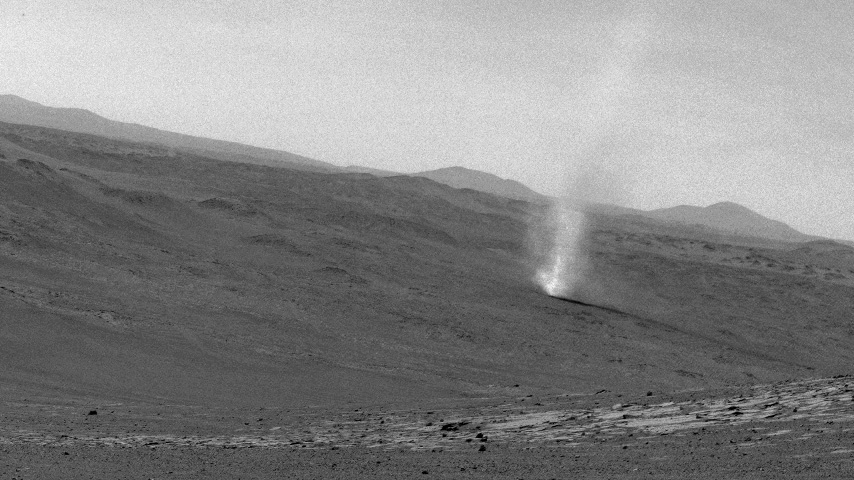The most recent spacecraft telemetry was acquired on June 16 from the Deep Space Network tracking complex at Goldstone, California. The Cassini spacecraft is in an excellent state of health and all subsystems are operating normally. Information on the present position and speed of the Cassini spacecraft may be found on the "Present Position" page at: http://saturn.jpl.nasa.gov/mission/presentposition/.
Wednesday, June 10 (DOY 161)
Orbit Trim Maneuver (OTM) #200 was performed today. This is the cleanup maneuver after the Titan 56 encounter on June 6. The main engine burn began at 2:30 AM PDT. Telemetry immediately after the maneuver showed the burn duration was 12.67 seconds, giving a delta-V of 2.1 m/sec. All subsystems reported nominal performance after the maneuver.
Thursday, June 11 (DOY 162)
Outreach gave a presentation today on the Cassini Saturn Observation Campaign during the IYA2009 Citizen Science Program Session at the American Astronomical Society meeting in Pasadena.
Friday, June 12 (DOY 163)
Today Imaging Science (ISS) performed intermediate phase, dark-face ring photometry for 4h30m, followed by another observation in the Satellite Orbit Determination Campaign. Next the Ultraviolet Imaging Spectrograph (UVIS) observed a star as it passed behind the rings. The Cassini Plasma Spectrometer then took pointing control of the spacecraft to perform a Magnetospheric and Plasma Science survey for 2h41m.
Saturday, June 13 (DOY 164):
The S50 sequence concluded and S51 began execution today at 2009-164T04:41. The S51 sequence will run for 40 days and conclude on July 23. Due to the size of the sequence, it has been split into two parts with Part 2 beginning execution on July 7. During execution there will be two targeted encounters of Titan and one non-targeted flyby of Dione. Eight maneuvers are scheduled, numbered 201 through 208. First time events include AACS Flight Software normalization for version 8.7.7.
Sunday, June 14 (DOY 165):
Orbit Trim Maneuver (OTM) #201 was performed today. This is the apoapsis maneuver setting up for the Titan 57 encounter on June 22. The Reaction Control Subsystem burn began at 7:45 PM PDT. Telemetry immediately after the maneuver showed the burn duration was 22 seconds, giving a delta-V of 0.03 m/s. All subsystems reported nominal performance after the maneuver.
Monday, June 15 (DOY 166):
Science Planning hosted an S55 Science Highlights meeting today. The presentation focused on what observations will be unique and highest priority during that sequence. The information was provided by the Target Working Team and Orbiter Science Team leads, with comments from the Investigation Scientists and other instrument team representatives. A special topic at this meeting was discussion of thruster use and predicted hydrazine consumption for the Enceladus 8 flyby in November.
A kickoff meeting was held today for a Radio Science (RSS) Titan 57 live update for DOY-173. RSS reported that based on the latest orbit determination solution from Navigation, published last Friday afternoon, the pointing errors are sufficiently small that they will be using the existing “on the shelf” RSS design.
Tuesday, June 16 (DOY 167):
An encounter strategy meeting was held today to cover the period between June 22 and July 8, Titan flybys T57 and T58, and maneuvers 203-205.
The Science Operations Plan process for S53 concluded last Friday with the final delivery to Uplink Operations of the handoff package. Today a kick-off meeting was held to initiate the final development process for this sequence. During the execution of S53, ground operations expects to uplink patches to CDS flight software, and Cassini will enter Solar Conjunction, a time of limited communications between the ground and the spacecraft.
Spacecraft Operations concluded AACS flight software (FSW) normalization today for the recently uplinked version A8.7.7. At all times there are four copies of FSW on the SSR. During FSW updates, two copies are made of the new software and two copies are kept of the current version. Spacecraft operations are then conducted using the new software, and once the new FSW load is deemed acceptable, normalization makes all copies equivalent to the new version.
Due to the one-day launch delay for the Lunar CRater Observation and Sensing Satellite and Lunar Reconnaissance Orbiter, the Cassini flight team has decided to accelerate the uplink schedule for OTM-202. LCROSS and LRO are currently scheduled to launch on June 18 and the maneuver would be uplinked on June 19. If there were any further launch delays, there could be a conflict for DSN coverage. An early uplink for Cassini avoids any possible issues.


































